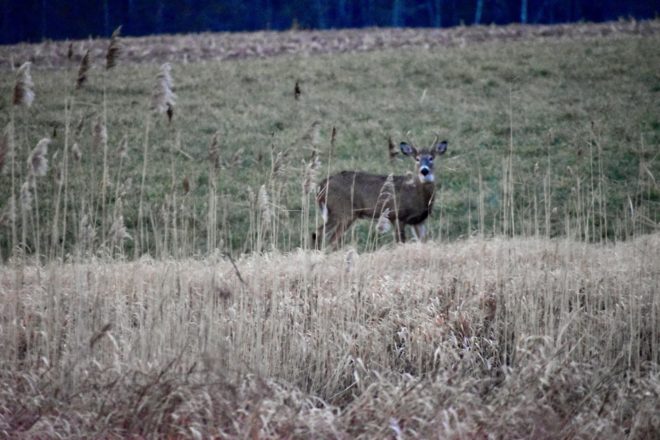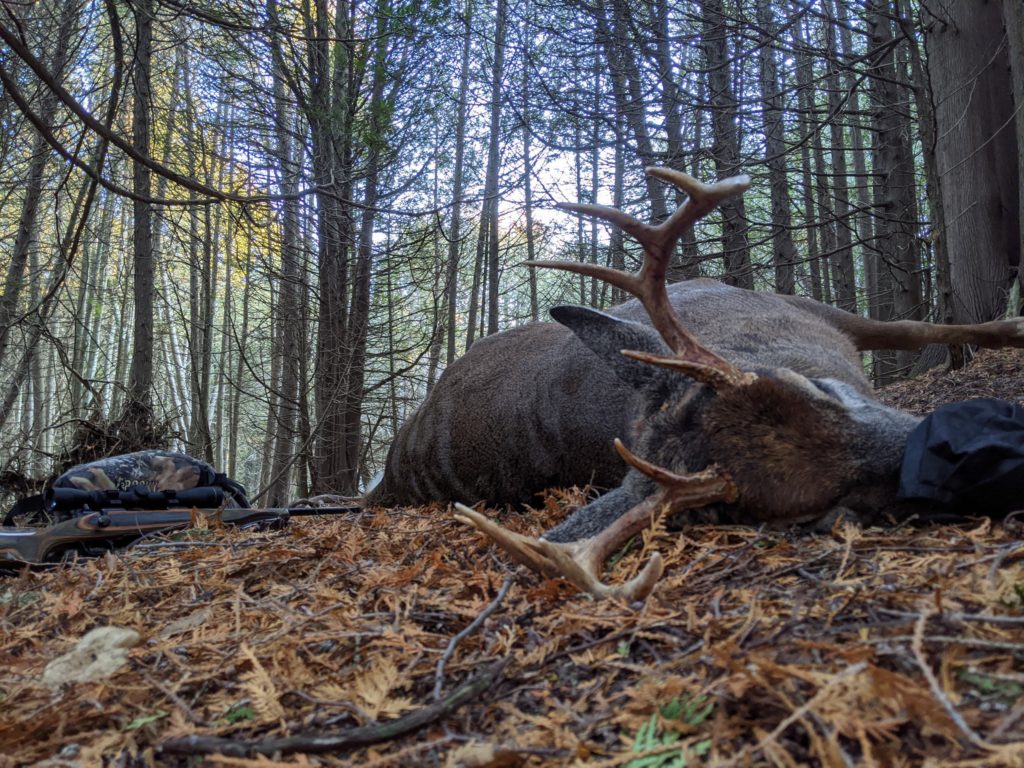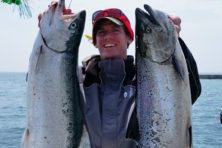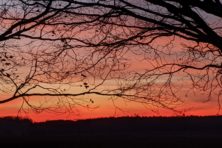Wild Things: Nearly Perfect Opening-Weekend Weather a Boost to Deer Hunt
- Share
- Tweet
- Pin
- Share

10-day muzzleloader season is up next
What a difference a year makes.
Disgruntled hunters lambasted Department of Natural Resources (DNR) wildlife staff last fall after a triple whammy produced the fewest gun deer whitetails since 1981. The latest possible gun deer opener in 2019 meant the rut was largely over; strong winds affected movement; and a record year of precipitation altered access to swamps and marshes, and it kept farmers from harvesting more than a million acres of corn.
All those deer saved by the massive increase in hideout acreage are showing up in a record start to the bow and crossbow season. Although this column was written prior to the DNR announcing opening-weekend numbers, there’s little doubt that 2020 will see a major increase in the harvest.
For the first time in years, the weather was nearly perfect: cool, clear and calm both Saturday and Sunday, and there was a light cover of snow across parts of the north.
Taxidermists are reporting a big increase in trophy racks – a sign that more mature bucks than usual survived last season – and deer processors are swamped.
Through mid-November, arrow and bolt hunters had combined to smash the previous total record bow buck harvest. The numbers included 33,452 bucks and 22,491 antlerless with crossbow, and 24,725 bucks and 17,148 antlerless with archery gear. Combined, the 58,177 bucks were 3,797 more than crossbow and bow hunters registered by the end of last season.
Along with 7,464 deer harvested during the youth gun hunt in October, the total kill through Nov. 15 stood at 105,280. To put that into perspective, that’s more whitetails than state gun hunters took in six straight seasons, 1969-74.
Heading into opening weekend, hunters had trimmed more than 2,200 deer from Kewaunee and Door counties.

Deer by the Numbers
One hundred years ago, the estimated deer kill in Wisconsin was about 20 times smaller than it is today. By 1921, the harvest had slipped to 7,000 whitetails. Things were so bleak that starting in 1925, hunting was allowed only in alternate years for the next decade.
By 1941, conditions had improved, and 40,000 deer were killed. Two years later, the first antlerless hunt in 24 years was held, and the total harvest surpassed 100,000. By 1950, the first any-deer season was held, and the kill was nearly 168,000.
It fell to 61,000 in 1960, and it was 72,844 in 1970. By 1978, it had more than doubled, then really took off. Records were set often during the early to mid-1980s (274,302 in 1985) and again in the late ’80s (310,192 in 1989).
Gun licenses peaked at more than 699,000 in 1990, and the gun kill hit another record at 350,040. In 1991, the kill was 352,330 with firearms, plus an archery harvest of 69,097.
Numbers fluctuated after that, often depending on how severe the winter was. In 1995, gun hunters registered 398,002 deer, and archers took a record 69,269. Good thing, because the winter was very severe, and many whitetails perished.
A string of mild winters followed. The numbers shot right back up, proving how prolific whitetails are. The harvests peaked in 1999-2000, with gun totals of 402,204 (1999) and 528,494 (2000), plus 92,203 archery (1999) and 86,799 (2000). That’s more than 1.1 million deer registered in person at stations during a two-year period with no earn-a-buck regulations.
Of course, even then there were hundreds of thousands of hunters who didn’t get a deer. It’s the nature of the beast, often dependent on the quality of the habitat, hunting pressure and knowledge of the hunter.
As impressive as the record numbers were, they were unsustainable. Northern forest habitat was decimated by too many deer: They literally ate themselves out of overwinter browse in some areas.
Meanwhile, the forests matured. With fewer deer, predation by wolves, coyotes and black bears became a much bigger factor in some areas. Even so, habitat, hard winters and hunters choosing to pull the trigger play the largest roles in most regions.
Register Your Deer
All deer must be registered no later than 5 pm the day after recovery. You can do that on the Hunt Wild app, online at GameReg.WI.gov or by calling 844-GAME-REG (844-426-3734). You’ll need your harvest authorization number. If you don’t have it, get it from your Go Wild account.
Proof of license and harvest authorization is needed while afield. That can consist of a paper copy, a PDF displayed on your phone, a Wisconsin driver’s license or a Go Wild Conservation Card.
The DNR’s Hunt Wild app includes maps, shooting hours, deer registration and access to your Go Wild account. App users can also locate chronic wasting disease sampling kiosks and deer-carcass disposal options.
Muzzleloader Season Up Next
The gun hunt will end Nov. 29, except in metro units, where it will run through Dec. 9. Elsewhere, the muzzleloader deer season will be Nov. 30-Dec. 9, and the four-day antlerless gun deer hunt will be Dec. 10-13.
To find out more about all the 2020 deer seasons, visit dnr.wisconsin.gov/topic/hunt/deer.




